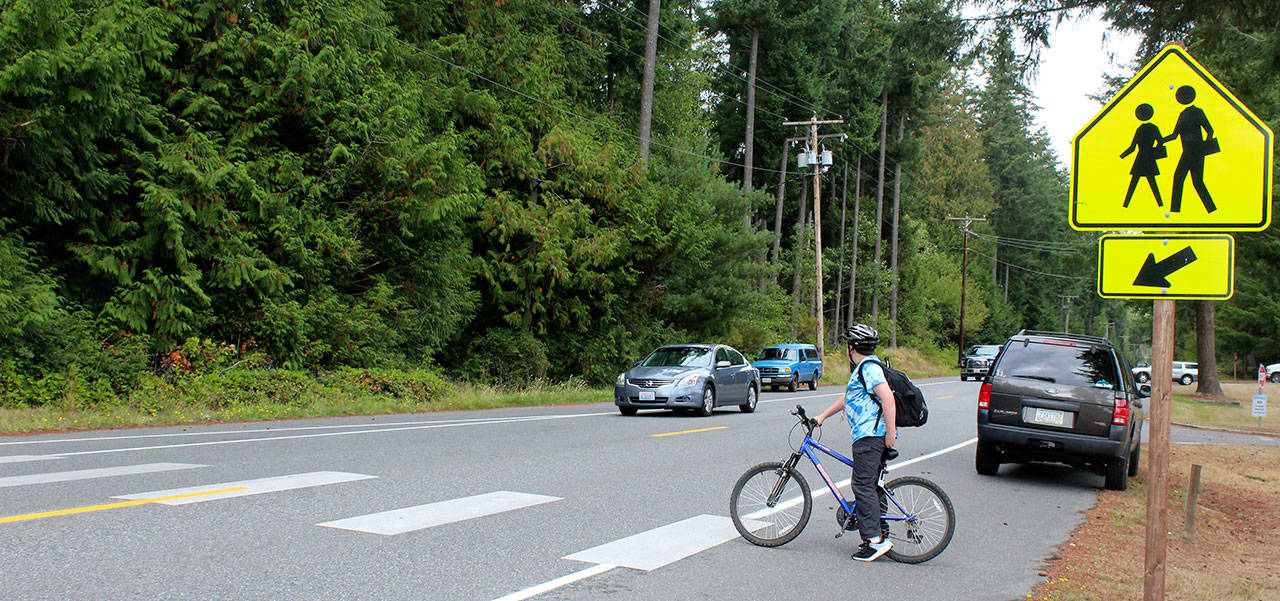Slow down or pay up.
That’s the message from law enforcement and school officials as school gets underway throughout Whidbey Island.
Driving too fast in school zones is both dangerous and expensive, with tickets ranging in fines from $214 to $808, far more than speeding fines issued on roads and highways.
Four tickets were issued for driving too fast in one of two school zones on Maxwelton Road from Sept. 4-7, said Sgt. Darren Crownover with the Island County Sheriff Office.
“We encourage the deputies to perform traffic emphasis in the school zones especially at the start of the school year to remind motorists to slow down,” Crownover said. “Washington State Patrol will also work in the school zones as well.”
Fines for excessive speed in a school zone start at $214 and increase based on how fast the motorist is clocked, Crownover explained.
For example, driving 34 mph in a 20 mph school zone adds up to $296 because that’s the designated fine for going 11 to 15 mph over a speed zone limit.
Drive 45 mph in a 20 mph?
You’re out $480.
Drive exceptionally fast and exceptionally stupid within blinking light school zones, say 51 mph?
Expect a fine of $808.
Don’t expect any leniency in court.
Judges are notoriously tough on drivers caught speeding in both school and construction zones, officials said.
South Whidbey High School and elementary schools don’t have crossing guards or a button for students to press to trigger flashing lights. So it’s up to drivers to slow down and be cautious as soon as they enter a school zone, which have speed limits of 20 mph.
“Both zones have signs and times posted along with flashing yellow lights that are illuminated during the times that the school zones are active,” Crownover said.
In front of South Whidbey Elementary School and South Whidbey Academy, drivers must heed 20 mph in those school zones from 7 to 9:30 a.m. and 2 to 4 p.m. Island Christian Academy is also within that speed zone.
“Our goal is student safety in these zones and we appreciate everyone’s cooperation,” said Superintendent Jo Moccia. “Another important safety issue is obeying school bus zones. When they are flashing red they should not be passed from either direction.”
The other South Whidbey school zone is on Campbell Road and Old Pietila at Waldorf School; it has signs only.
State law doesn’t allow school zone speeding violations to be considered for mitigation in court, unlike other traffic violations. Mitigation is one of four choices the motorist can select on the traffic citation when mailing it to District Court within 15 days after being ticketed.
“Mitigation means that you’ve admitted you were speeding but would like the court to consider reducing the fine a little,” explained Craig Cahoon, a lawyer based in Mount Vernon who specializes in traffic infractions. “This is not an option with school zone tickets. In other words, if you send your ticket back to court with the mitigation box checked, you’re agreeing that you’ve committed the infraction and will be paying the full fine.”
Cahoon accepts clients from Island County. The Craig Cahoon Law Firm advertises online and gives many tips on how best to fight traffic moving violations, especially those that mar driving records and lead to higher auto insurance premiums.
“Absolutely, it’s worth it to fight speeding tickets, school zone or otherwise,” he said in an interview. “First thing I try to do is get the ticket dismissed. This is my most common outcome for Island County tickets. “
Another possible outcome is amending the charge to a non-moving violation, such as expired tabs.
Motorists with a clean driving record prior to the speeding ticket may be considered for a deferral-type program, which eventually dismisses the speeding charge pending no further traffic citations.
Courts sometimes offer a payment plan if the ticket can’t be paid in full within 30 days.
But there’s a simpler way for drivers to avoid fines, court appearances, attorney fees and higher insurance rates.
Look up.
Slow down. Think kids.
Because the kids don’t always think.



